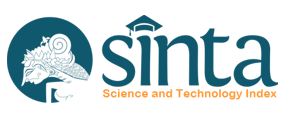MASLAHAT ISSUE IN ISLAMIC MICROFINANCING: STUDY AT ISLAMIC COOPERATIVE AND ISLAMIC RURAL BANK
Abstract
This paper aims to identify the priority of goals and its strategies on Islamic micro-financing especially at Islamic rural banking and Islamic cooperative. This study uses analytic network process (ANP) as data processing method. The findings are: first, maslahat of people is the most dominant goal on Islamic micro-financing both banking and non-banking service providers. Therefore, the most dominant alternative to achieve maslahat is to create empowering programs for needed people effectively. Second, internal strategy is the fittest strategy on Islamic micro-financing both Islamic rural bank and Islamic cooperative. And the alternative strategy to imply the internal strategy is to increase employment performance.
Keywords
Full Text:
PDFReferences
Abbas, K., Shirazi, N., Abbas, K., Shirazi, N., Adnan, M. A., Ajija, S. R., Haneef, M. A., Pramanik,
A. H., & Mohammed, M. O. (2015). The key players' perception on the role of Islamic microfinance in poverty alleviation: The case of Pakistan. Journal of Islamic Accounting and Business Research, 6(2), 244-267.
Amalia, E., Nur, D. M., & Arif, R. Al. (2013). The Suitability of Islamic Economics Learning in Higher Education with the Needs of Human Resources in the Islamic Financial Industry in Indonesia. Inference Journal of Social and Religious Research, 123(1), 123-142.
Anisa Dwi Utami, Lukman M Baga, Rahmat Yanuar, Tita Nursyamsiah, Busaid, & Mahanani, Y. (2023). Development Strategy of Islamic People's Financing Bank in Indonesia. AL- MUZARA'AH, 11(1), 47-61. https://doi.org/10.29244/jam.11.1.47-61
Antonio, M. S. (2011). Islamic Microfinance Initiatives to Enhance Small and Medium Enterprises in Indonesia: From Historical Overview to Contemporary Situation. Journal of Indonesian Islam, 5(2), 313. https://doi.org/10.15642/JIIS.2011.5.2.313-334
Ascarya. (2012). Solutions To Prevent Financial Crisis in Islamic Economic Perspective: Anp Approach. Proceedings of the International Symposium on the Analytic Hierarchy Process, 23-26.
Ascarya, Yumanita, D., Achsani, N. A., & Rokhimah, G. S. (2008). Measuring the Efficiency of Islamic Bank in Indonesia and Malaysia Using Parametric and Nonparametric Approach. 3rd International Conference on Islamic Banking and Finance, July.
Gallardo, J. (2001). A Framework for Regulating Microfinance Institutions: The Experience in Ghana and the Philippines (November Issue). The World Bank.
Hariyanto, R. (2017). Fostering the spirit of entrepreneurship towards PESANTREN-BASED UMAT ECONOMIC INDEPENDENCE (Case Study at PP Darul Ulum Banyuanyar Pamekasan). NUANSA: Journal of Islamic Social and Religious Sciences Research, 14(1), 185. https://doi.org/10.19105/nuansa.v14i1.1318
Kazemian, S., Rahman, R. A., Sanusi, Z. M., & Adeyemi, A. A. (2016). Role of market orientation in sustainable performance: the case of a leading microfinance provider. Humanomics, 32(3).
Kirkpatrick, C., & Maimbo, S. M. (2002). The Implications of the Evolving Microfinance Agenda for Regulatory and Supervisory Policy. Development Policy Review, 20(3), 293-304.
Development and Market Deepening of Sharia People's Economic Banks (BPRS) (Vol. 44, Issue 1). (2021). https://doi.org/10.47655/dialog.v44i1.470
Perwartaatmadja, K., & Tanjung, H. (2007). Syariah Bank: Theory, Practice, and Its Role. Celestial Publishing.
Rahman, R. A., & Dean, F. (2013). Challenges and solutions in Islamic microfinance. Humanomics, 29(4), 293-306. https://doi.org/10.1108/H-06-2012-0013
Ringim, K. J. (2014). Perception of Nigerian Muslim account holders in conventional banks toward Islamic banking products. International Journal of Islamic and Middle Eastern Finance and Management, 7(3), 288-305.
Saaty, T. L., & Vargas, L. G. (2006). Decision making with the analytic network process (282nd ed.). Springer Science and Business.
Seibel, H. D., & Agung, W. D. (2006). Islamic Microfinance in Indonesia (2006; 2).
Siwar, C., & Talib, B. A. (2001). Micro-Finance Capacity Assessment for Poverty Alleviation: Outreach, Viability and Sustainability. Humanomics, 17(1), 116-133.
Wulandari, P. (2019). Enhancing the role of Baitul Maal in giving Qardhul Hassan financing to the poor at the bottom of the economic pyramid: Case study of Baitul Maal wa Tamwil in Indonesia. Journal of Islamic Accounting and Business Research, 10(3), 382-391. https://doi.org/10.1108/JIABR-01-2017-0005
Wulandari, P., & Kassim, S. (2016). Issues and challenges in financing the poor: the case of Baitul Maal Wa Tamwil in Indonesia. International Journal of Bank Marketing, 34(2), 216-234. https://doi.org/10.1108/IJBM-01-2015-0007
DOI: https://doi.org/10.32507/ajei.v1i2.3262
Refbacks
- There are currently no refbacks.
Copyright (c) 2025 Al-Infaq: Jurnal Ekonomi Islam
Indexed by:
© Copyright CC BY-SA Al-Infaq: Jurnal Ekonomi Islam, p-ISSN: 2087-2178, e-ISSN: 2579-6453 |






.png)